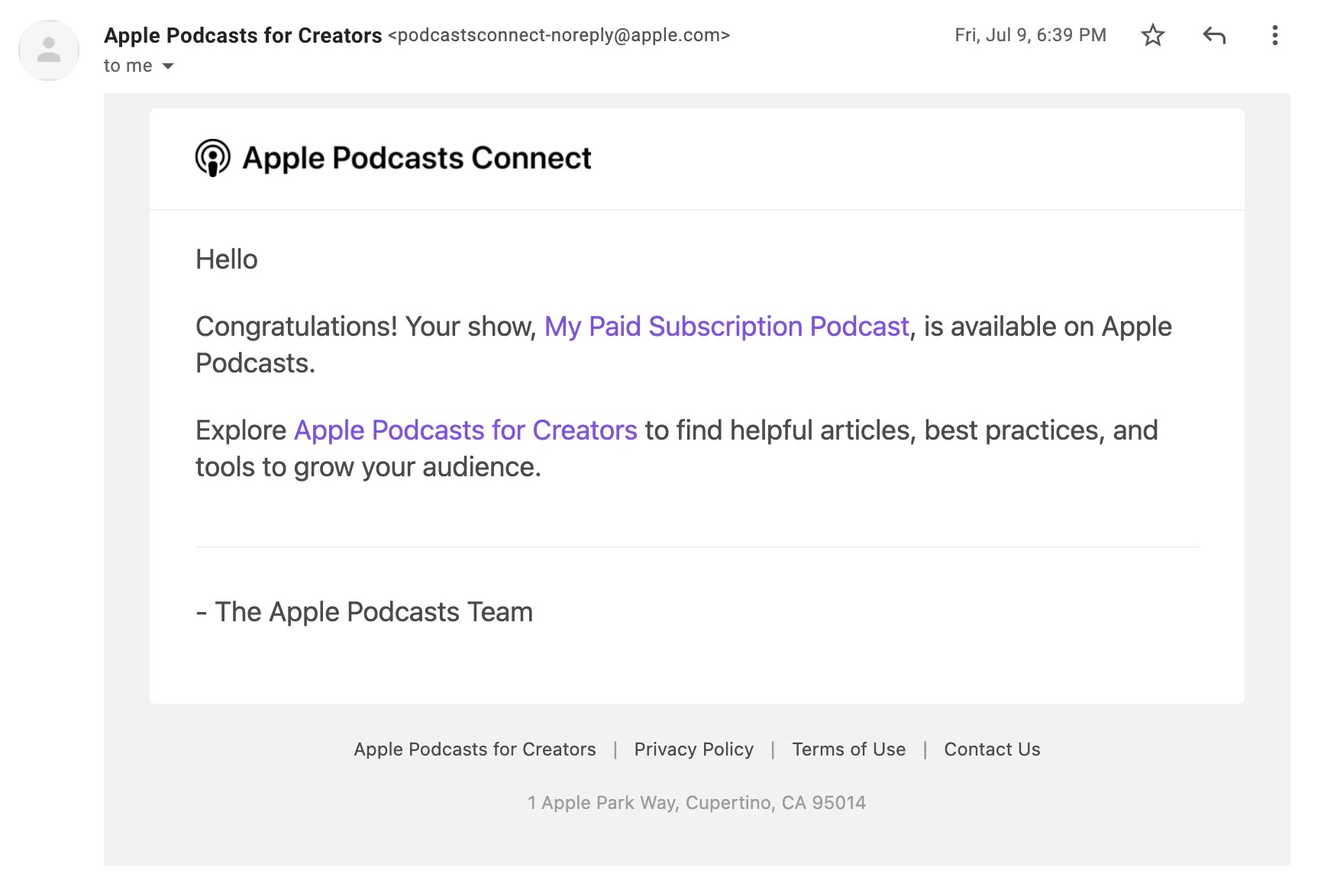Starting a podcast can seem daunting, but with the right guidance, anyone can launch their voice into the world. Podcasts have surged in popularity, offering a unique way to connect with audiences, share expertise, or simply express creativity. This guide will walk you through the essential steps on How To Start A Podcast, ensuring you’re well-equipped for a successful launch and growth.
Getting Listed in Podcast Directories: Essential for Discovery
Podcast directories are the search engines for audio content. Think of them as the equivalent of Google for podcasts. These platforms, like Apple Podcasts and Spotify, are where millions of listeners go to discover new shows. Listing your podcast in these directories is not just recommended; it’s a critical step in your podcast marketing strategy. Without being listed, your potential audience will have a much harder time finding you.
Submitting to Apple Podcasts (Apple Podcasts Submission)
Apple Podcasts, while no longer the absolute largest, remains a powerhouse in the podcasting world, contributing significantly to podcast downloads. Getting listed on Apple Podcasts ensures your show is accessible to a vast audience.
Here’s a step-by-step guide on how to submit your podcast to Apple Podcasts using Buzzsprout, a popular podcast hosting platform:
- Log in to Buzzsprout: Access your Buzzsprout account.
- Navigate to the Directories Tab: Find the “Directories” section within your Buzzsprout dashboard.
- Click “Get Listed” under Apple Podcasts: Initiate the submission process for Apple Podcasts.
- Log in to Apple Podcasts Connect: You’ll be redirected to Apple Podcasts Connect, where you’ll need to log in with your Apple ID.
- Click “Validate”: Buzzsprout will validate your podcast feed to ensure it meets Apple Podcasts’ requirements.
- Click “Submit”: Finalize your submission to Apple Podcasts.
Keep in mind that Apple Podcasts reviews each podcast manually, which can take up to 24 hours for approval. Once approved, you will receive a confirmation email, and your podcast will be searchable on the Apple Podcasts directory.
Submitting to Spotify (Spotify Podcast Submission)
Spotify has rapidly grown to become the leading podcast directory globally, surpassing even Apple Podcasts in terms of downloads. Listing your podcast on Spotify is essential to maximize your reach.
Here’s how to get your podcast listed on Spotify through Buzzsprout:
- Login to Buzzsprout: Access your Buzzsprout account.
- Go to the Directories Tab: Locate the “Directories” section in your dashboard.
- Select “Get Listed” under Spotify: Start the Spotify submission process.
- Select “Submit Podcast to Spotify”: Confirm your submission to Spotify.
Spotify’s submission process is remarkably quick, and your podcast should be listed almost immediately after submission.
Other Podcast Directories (Expand Reach with More Directories)
While Apple Podcasts and Spotify cover a significant portion of the podcast listening audience, submitting to smaller directories can further expand your podcast’s discoverability. Consider these additional directories to broaden your reach and ensure your podcast is available wherever listeners may search.
Launching and Growing Your Podcast: Strategies for Success
Launching your podcast is just the beginning. To truly succeed, you need a strategy for both launch and ongoing growth. When it comes to launching, you have two main approaches:
Launch Strategies: Grand Opening vs. Soft Open (Podcast Launch Strategies)
Choosing the right launch strategy can set the tone for your podcast’s initial reception and long-term trajectory.
Strategy #1: The Grand Opening: This approach involves building anticipation and excitement for your podcast before its launch. It’s particularly effective if you already have an existing audience or network.
- Build Hype: Start promoting your podcast weeks before your launch date.
- Reach Out: Connect with individuals and communities who might be interested in your show.
- Promotional Activities: Consider paid advertising, aiming for features in platforms like Apple Podcasts’ New and Noteworthy, or reaching out to relevant publications for reviews or mentions.
Strategy #2: The Soft Open: A soft open is a more subtle approach. You release episodes without heavy promotion initially, allowing you to refine your process and build confidence.
- Low Pressure Launch: Publish episodes as if you already have listeners, but hold off on extensive promotion.
- Refine and Improve: Use this period to get comfortable with recording, editing, and publishing, ironing out any technical or content kinks.
- Overcome Imposter Syndrome: Gain confidence by seeing your podcast exist and even get a few listens in a less pressured environment before pushing for broader promotion.
Marketing Tips to Grow Your Listenership (Podcast Marketing Tips)
Growing your podcast audience takes consistent effort and a strategic approach to podcast marketing. Here are seven effective marketing tips to help expand your listenership:
-
Share Your Podcast with Friends and Family: Start with your inner circle. Share your podcast with friends and family, ask for their honest feedback, and encourage them to leave initial reviews on Apple Podcasts. These early reviews can provide social proof and boost your podcast’s visibility.
-
Create a Buzzsprout Ad: Leverage podcast-specific advertising. Buzzsprout Ads are designed to promote podcasts to podcast listeners, making them highly effective. These ads target individuals already engaged with the medium, increasing the likelihood of attracting interested listeners to your show. For a reasonable budget, you can reach a significant number of potential listeners genuinely interested in your podcast’s niche.
-
Post Episodes on Social Media: Social media is a powerful tool for connecting with your audience beyond audio. Share engaging content related to your episodes on platforms like Facebook, Instagram, TikTok, Twitter, and LinkedIn. Creating “Visual Soundbites” – short, attention-grabbing video or image clips with audio – can be particularly effective for social media sharing. Consider filming snippets of your recording sessions for platforms like TikTok to potentially go viral and significantly broaden your reach.
-
Join Groups and Forums: Engage in relevant online communities. Participate in forums like Reddit, Quora, and Facebook groups related to your podcast’s topic. Provide valuable insights and answers to questions, naturally incorporating links to your podcast episodes where relevant. Aim to contribute meaningfully to these communities, establishing yourself as a knowledgeable resource, and subtly driving traffic to your podcast.
-
Cross-Promote with Other Creators: Collaborate with fellow podcasters. Cross-promotion involves partnering with other podcasters in a similar or complementary niche to promote each other’s shows. This mutually beneficial strategy exposes your podcast to a new, already engaged audience. Platforms like Podchaser can help you find potential collaborators, or you can reach out to hosts directly through their websites or social media.
-
Overcast Ads: Explore podcast-specific ad platforms. Overcast, a popular podcast app, offers ads exclusively for podcasts. While it requires an investment, Overcast ads can be an effective way to acquire new subscribers, especially when starting out. They offer a direct route to reach dedicated podcast listeners within a relevant platform.
-
Create a Call to Action (CTA): Guide your listeners on what to do next. A call to action is a clear instruction you give to your listeners at the end of each episode. Encourage them to subscribe and leave reviews, download bonus content (lead magnets), sign up for your email newsletter, or visit your website. Focus on a single, clear CTA per episode to avoid overwhelming your audience and maximize engagement.
Free Resources and Support (Podcast Resources)
Starting and growing a podcast can come with questions and challenges. Utilize available resources to support your journey. Platforms like Buzzsprout often offer extensive guides, tutorials, and support documentation to help you navigate any issues you encounter and optimize your podcasting process.
Celebrate Your Podcast Launch (Celebrate Podcast Success)
Launching a podcast is a significant accomplishment. Take a moment to acknowledge and celebrate your hard work once your first episode is published. Reaching this milestone is a testament to your dedication and effort. Congratulations from the podcasting community! Embrace the journey and look forward to the growth and connections your podcast will bring.
Frequently Asked Questions (FAQs about Starting a Podcast)
How Much Does It Cost to Start a Podcast? (Podcast Startup Costs)
The financial investment required to start a podcast can vary widely. If you’re just beginning and already own a computer, you can start with a relatively low initial investment. A basic setup, including a decent USB microphone and headphones, might range from $60 to $100. However, if you aim for higher production quality and invest in equipment like an audio interface, professional-grade microphones, and advanced recording software, the costs can exceed $1,000. Your budget will largely depend on your desired audio quality and the equipment you choose to invest in.
Do Podcasters Make Money? (Podcast Monetization)
Yes, podcasting offers various monetization opportunities. Podcasters can generate income through direct methods like sponsorships and advertisements, where brands pay to have their products or services mentioned on the podcast. Other avenues include paid subscriptions, offering premium content to paying subscribers, selling merchandise related to the podcast, and creating and selling online courses or digital products. The earning potential varies significantly based on audience size, listener engagement, niche, and chosen monetization strategies. While it requires effort to build a monetizable podcast, it can become a lucrative venture with consistent effort and strategic planning.
How Do I Start a Podcast with No Experience? (Starting Podcast with No Experience)
Starting a podcast without prior experience is absolutely achievable. The key is to focus on a solid podcast marketing strategy from the outset to attract your initial listeners. Effective podcast marketing channels are crucial for discoverability. These include actively promoting your podcast on social media platforms, ensuring your podcast is listed in major directories like Apple Podcasts and Spotify, optimizing your episode titles and descriptions for search engines (podcast SEO), and maintaining a consistent publishing schedule to keep your audience engaged and returning for more. Focus on providing valuable content and consistently promoting your show, and you can build a listener base even without prior podcasting experience.

